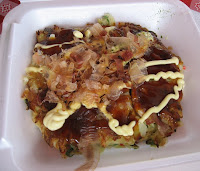
Washi or Wagami (和紙) is a
Washi is made using fibers, almost any grass or tree can be material to made washi. Gampi, mitsumata, and paper mulberry are three popular sources.
- Ganpishi (雁皮紙) - In ancient times, it was called Hishi (斐紙). Ganpishi has a smooth, shiny surface and is used for books and crafts.
- Kozogami (楮紙) - Kozogami is made from paper mulberry and it is the most widely made type of washi. It has a toughness closer to cloth than to ordinary paper and does not weaken significantly when treated to be water-resistant.
- Mitsumatagami (三椏紙) - Mitsumatagami or mitsumata shrub (Edgeworthia papyrifera) has an ivory-colored, fine surface and is used for shodo as well as printing. It was used to print paper money in Meiji period.
Washi also can be made using bamboo, hemp, rice, and wheat.
Washi is generally tougher than ordinary paper and used in many traditional arts such as origami (fold paper art), shodo (Japanese calligraphy), and ukiyo-e (a genre of woodblock prints).
Washi was also used to make various everyday stuffs like clothes house goods, and toys as vestments and ritual objects for Shinto priests and statues of Buddha. It was also used to make wreathsthat were as medals for winners in the 1998 Winter Paralympics.




















